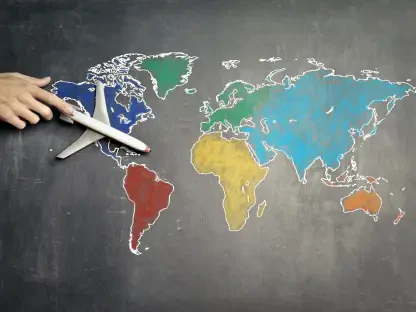The modern workplace has undergone substantial transformations, driven largely by the unprecedented challenges of the recent pandemic. Organizations have had to pivot their human resources strategies to keep pace with the shifting employee expectations and work environments. From remote work models to the integration of new technologies, these changes are redefining how businesses manage their most valuable asset: their people. The evolving dynamics highlight an urgent need for adaptive HR strategies to ensure organizational success and employee satisfaction in a rapidly changing world.
Understanding the Current Workplace Dynamics
Today’s workplace landscape is characterized by a blend of innovation and adaptation as companies navigate the complexities of modern employee needs and expectations. Human Resources plays a critical role in this environment, adapting to the rise of remote work and hybrid models. The advent of digital communication tools and platforms has facilitated these transitions, allowing employees to work efficiently outside traditional office settings.
Moreover, technological advancements continue to influence HR practices. AI and machine learning are being leveraged to streamline recruitment processes, enhance employee engagement, and predict workforce trends. Major players in the market, like technology firms and innovative startups, are setting the pace by adopting these state-of-the-art approaches. Alongside these shifts, regulations governing data security, employee privacy, and workplace safety have evolved, shaping HR practices to meet both legal requirements and organizational goals.
Key Trends Shaping HR Strategies
Influential Trends and Developments
The shift toward remote and hybrid work models is one of the most influential trends in shaping HR strategies. Employees now expect flexibility in their work arrangements, necessitating policies that support remote working and offer varied benefits that cater to diverse needs. Employee well-being has also taken center stage, with mental health resources and work-life balance becoming integral to HR planning.
The adoption of AI in HR processes is increasing, offering opportunities to enhance recruitment, personnel management, and training. As employees demand more from their work environment, organizations are cultivating adaptive cultures that prioritize growth, inclusion, and resilience.
Market Projections and Future Outlook
Data suggests a robust increase in the adoption of flexible work practices, with projections indicating continued growth in remote and hybrid work arrangements. Employee satisfaction metrics indicate that organizations emphasizing adaptability and employee-centric policies experience higher levels of employee engagement and retention. Looking ahead, it is anticipated that HR will continue innovating to keep pace with evolving workplace demands, using data-driven insights to craft forward-thinking strategies.
Challenges in Adapting HR Strategies
Adapting HR strategies to meet new workplace demands presents unique challenges. Organizations are grappling with how to manage employee burnout, especially among remote workers who find it difficult to disconnect from work. Blending traditional work practices with modern, technology-driven methods creates further complexity.
Effective communication and employee engagement are critical yet challenging aspects, particularly in a dispersed workforce. Organizations are exploring solutions such as fostering cultural shifts, implementing comprehensive training programs, and offering innovative employee benefits to overcome these hurdles and create a supportive work environment.
Regulatory Impacts on HR Practices
Regulatory frameworks continue to evolve, with significant implications for HR practices. Laws pertaining to data protection, employee rights, and workplace safety standards are shaping how companies manage their personnel. Compliance challenges arise as organizations must navigate complex regulations while ensuring the security of sensitive employee information.
These regulatory constraints necessitate strategic HR practices, ensuring that companies remain compliant while fostering a safe and equitable workplace environment. The role of HR extends beyond policy compliance to shaping organizational culture that aligns with legal standards and business objectives.
Future Directions for HR Strategy Integration
The future of HR strategies lies in the integration of emerging technologies and an emphasis on employee-centric practices. AI-enhanced HR processes are expected to become commonplace, enabling more precise and predictive workforce management. Market disruptors and shifting economic conditions will continue to influence how organizations approach HR strategies.
Factors such as innovation, regulatory developments, and global economic trends will be instrumental in shaping the future of HR practices. Organizations will need to stay agile, adapting to new technologies and employee expectations to maintain competitive advantages and foster resilient workplace cultures.
Conclusion and Strategic Recommendations
The discussion around evolving workplace expectations and HR strategies has laid bare the complex challenges and opportunities that lie ahead. Organizations should focus on aligning HR strategies with future trends, investing in technology and flexible work practices. This requires a cultural shift toward valuing employee well-being, empowerment, and continuous learning.
In navigating these changes, HR departments are advised to consider strategic adaptations that support growth and innovation. Emphasizing flexibility, balance, and technological adaptation will be crucial to meeting the demands of a dynamic global workforce, ensuring both employee satisfaction and organizational success in the years to come.









